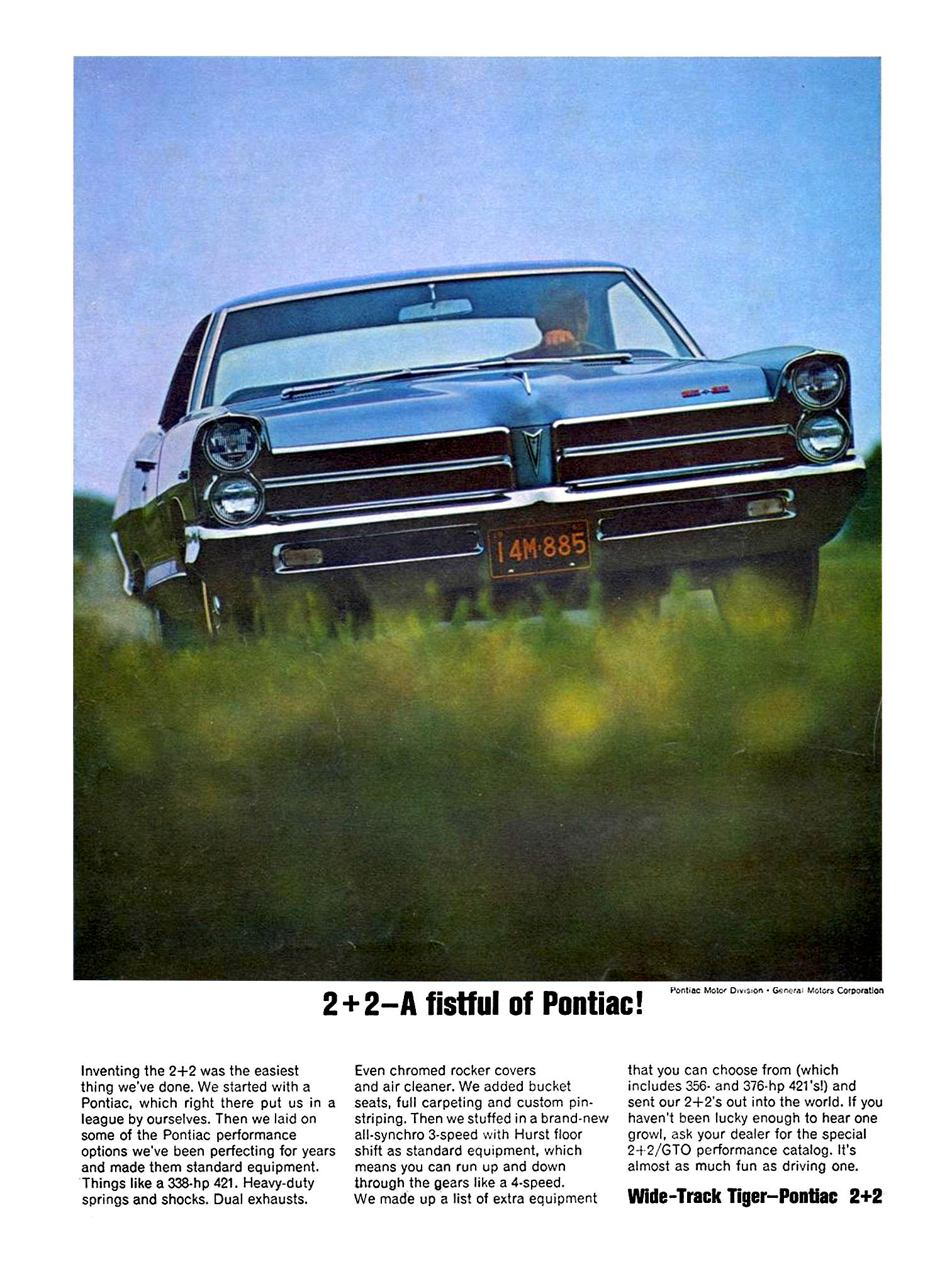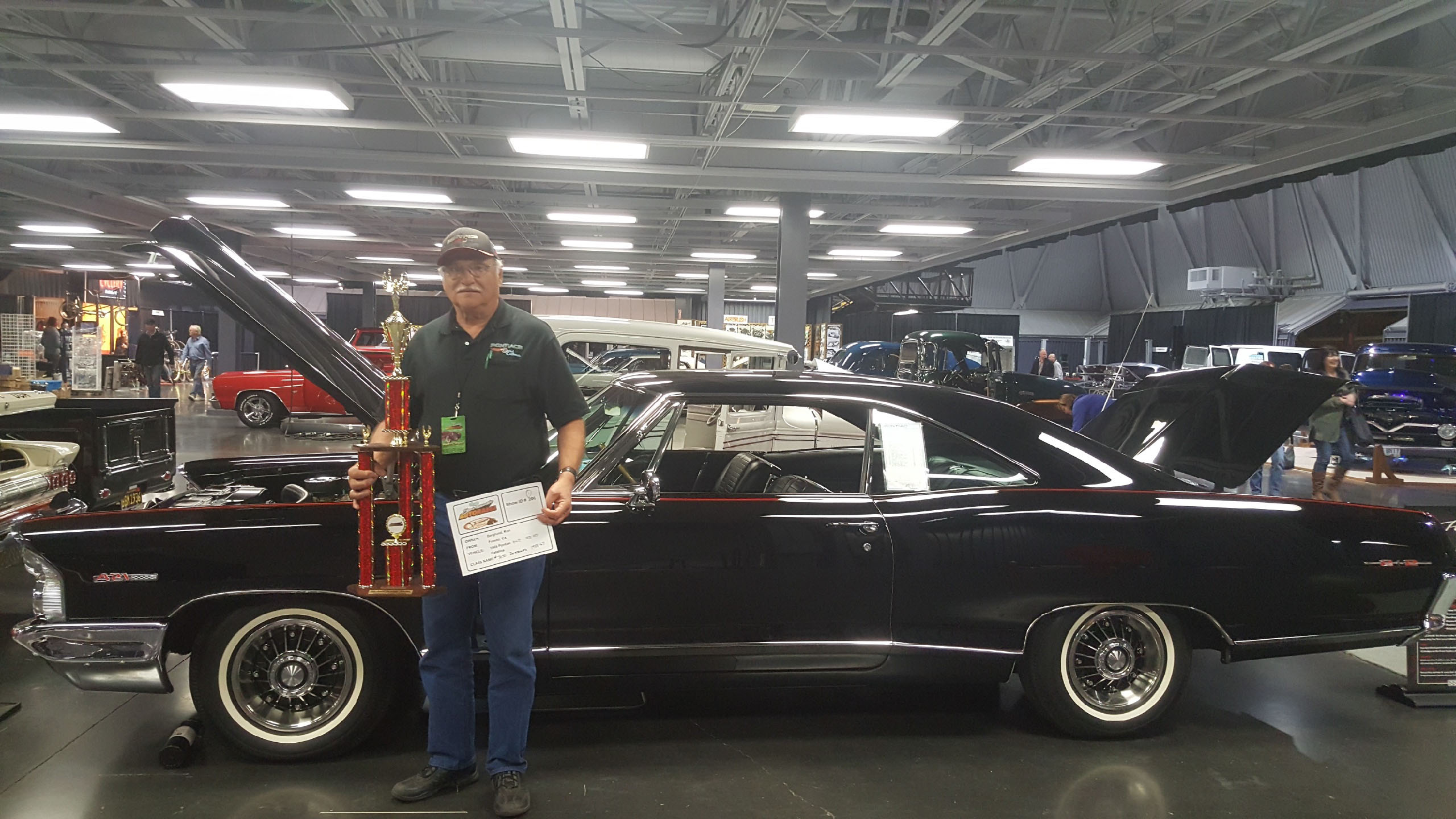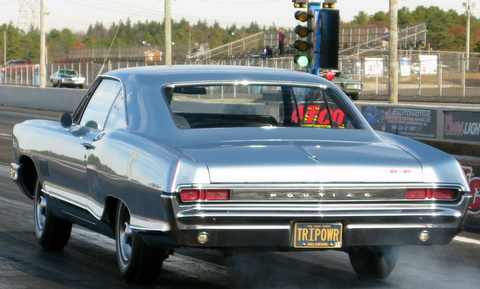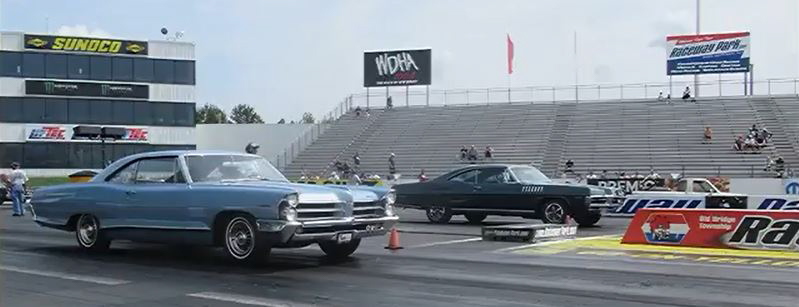Media | Articles
When 2+2 equals a Pontiac Catalina that deserves more recognition
Did you notice the young couple across the street washing their big Pontiac coupe last Saturday morning? They seemed to be having a lot of fun, hiding behind the bumpers, jumping out to soak each other, laughing…
You don’t see that sort of thing anymore. If you did, your house must have a magic window that looks back to 1965. Either that, or you’re staring at the print advertisement for the 1965 Pontiac 2+2 that depicts a neat slice of American suburban life. The ad was created by Pontiac’s agency, MacManus, John & Adams, with Jim Wangers at the head of the account and a major contributor to the creative. The short copy played up the 2+2’s style and performance, including the standard 338-horsepower, 421-cubic-inch, four-barrel V-8.
The tagline, “Wide Track Tigers: 2+2/GTO,” underscored the link that Pontiac wanted customers to make between its full-size and mid-size muscle machines. Other ads called the 2+2 the GTO’s “big brother.”
The connection to the GTO was not much of a sales generator, however. Pontiac built just under 28,000 of these full-size muscle machines through 1967, with 11,519 of those sold in 1965, the 2+2’s best year. Even at a Pontiac gathering, it’s a rarity.
Marketplace
Buy and sell classics with confidence
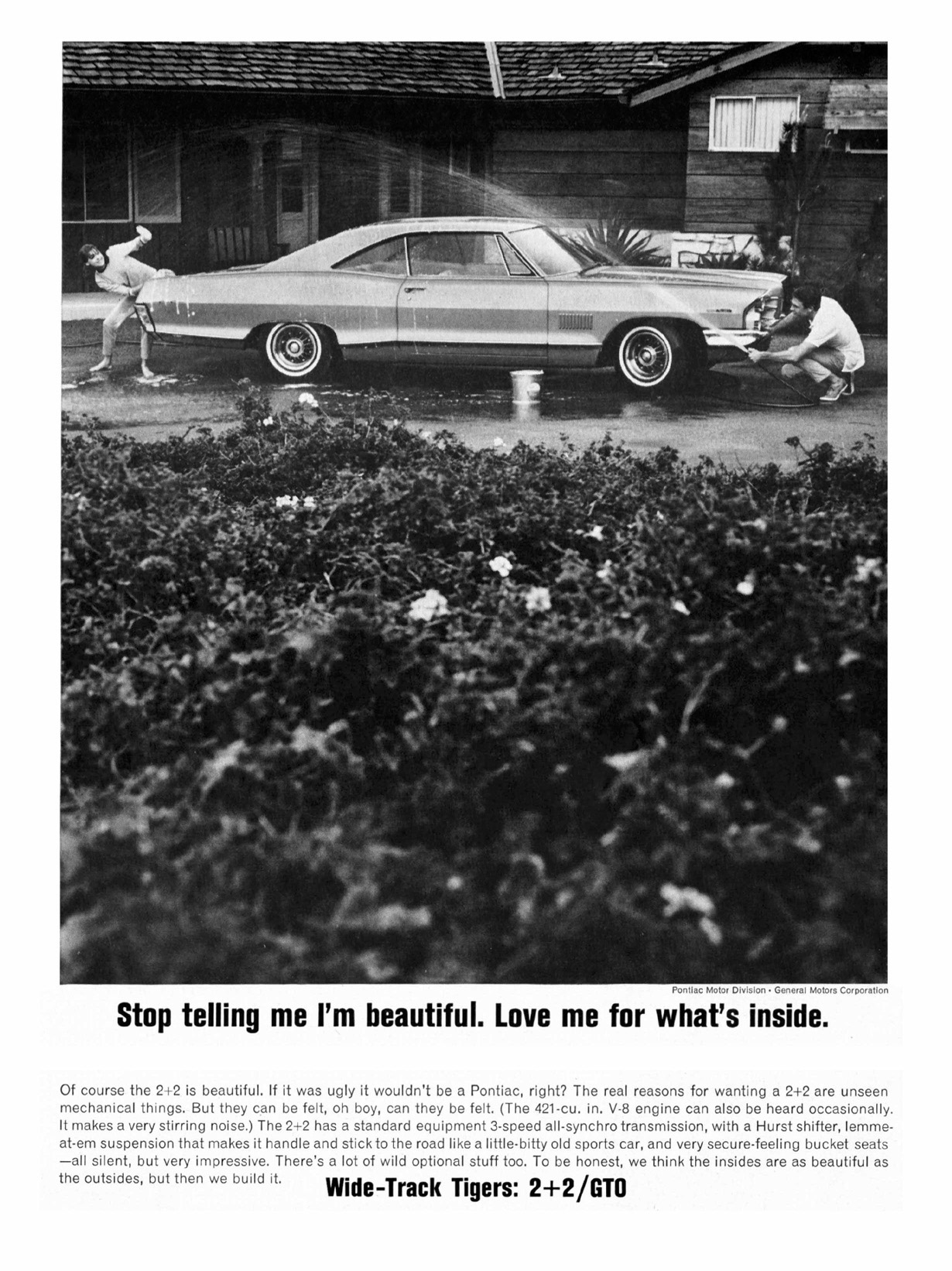
“It’s usually the only 2+2 wherever we show it,” Ron Berglund says of the award-winning Starlight Black 1965 model that he and his son, John, restored together. “You can’t imagine the excitement it generates.”
Ron Berglund is the Western Regional Director of Pontiac Oakland Club International. He and John are also among the officers of a new POCI chapter dedicated to this somewhat obscure model.
A stunning show car and concours winner today, the Berglunds’ 2+2 was a near-wreck when Ron found it in 1992. The original 421 Tri-Power was included in the sale, but the car was missing many parts that the Berglunds spent years hunting down, with the restoration starting in 2013. Much of the original body and frame were beyond repair, so the Berglunds combined the 2+2 and a 1965 Catalina donor car. They also added some options, including power steering, a wood-rim steering wheel, and a rear defroster. They’re now restoring a second 2+2.
Jack Anderson, president of the new POCI chapter, echoes the 2+2’s recognition problem.

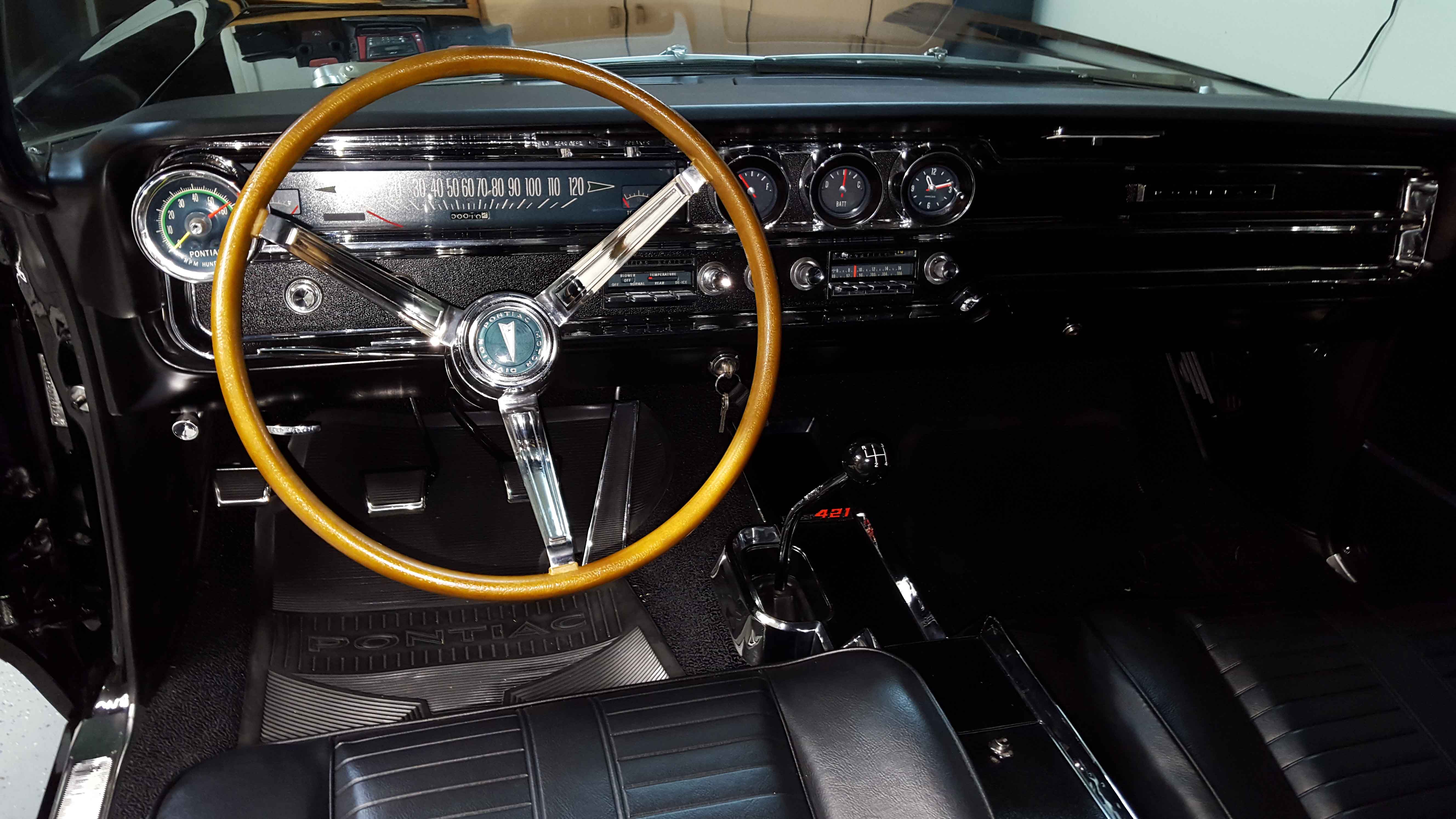
“I bought my 1965 2+2 in 2007 and quickly realized that these cars were not well known in the hobby and were undervalued,” says Anderson, of Wilmington, Delaware. “Even to this day, many people don’t know what a 2+2 is.”
In 2008, Anderson revived a 2+2 owner registry that another POCI member had abandoned in the 1990s. He developed a website and has so far accounted for about 360 cars. That number includes the U.S. production 1964–67 models, Canadian 2+2s built until 1970 (all of which used Chevy chassis and powertrains), plus the one-year-only 1986 Grand Prix 2+2, a special aero-design model built for NASCAR homologation.
A bigger Goat?
By 1962, Pontiac’s focus on Wide Track style, Super Duty racing performance, and understated luxury had driven it to third in new car sales. The Grand Prix was a sporty coupe, while the Bonneville was the range topper.
Perceiving a niche for a lower-priced sporty version of its big B-body, Pontiac added the “2+2” option package for the mid-range Catalina coupe and convertible for 1964. The $291 package essentially added bucket seats, special trim, and heavy-duty suspension. Engine upgrades over the standard 389-cu-in, two-barrel V-8 cost extra.
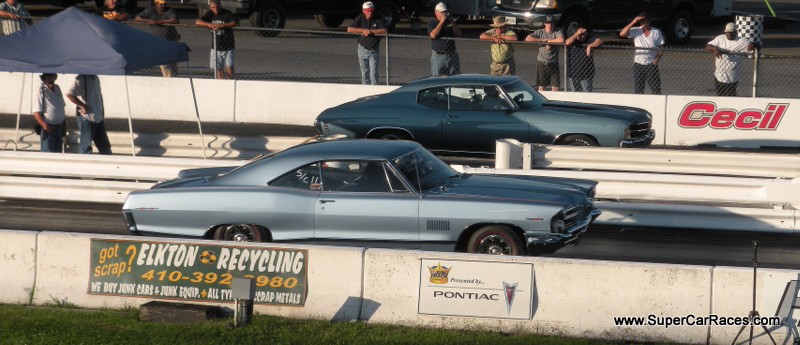

The 2+2 name was, like the GTO’s, borrowed from a Ferrari, in this case its four-seat coupe. The Ferrari’s “+2” referred to a rear seat suitable for children or very small and/or tolerant adults. The Pontiac 2+2, however, was a full five-seater. (Ford would also use the 2+2 name on its 1965 Mustang fastback.)
Pontiac was so pleased that 7998 customers choose the 2+2 option that it was reprised for the fully redesigned 1965 Catalina. The look was curvier and more sculpted, with a rakish fastback roofline on the coupe. Ordering the $397 2+2 Sports option eliminated Catalina badges, essentially making the 1965 2+2 its own model.
The optional 421 Tri-Power, with its three two-barrel carburetors, offered 356 horsepower, while the 421 H.O. with Tri-Power, a hotter cam, and other upgrades made 376 hp. The standard three-speed manual transmission could be replaced with an optional four-speed or the then-new Turbo Hydra-Matic three-speed automatic. Tasteful exterior dress-up included faux fender vents and pinstriping. Among the options were Pontiac’s famous eight-lug wheels, which combined a steel rim with an aluminum center section that integrated the brake drum.
Pontiac made the 2+2 a separate model for 1966, but switched it back to option status for its last year, 1967, when just 1768 were sold.
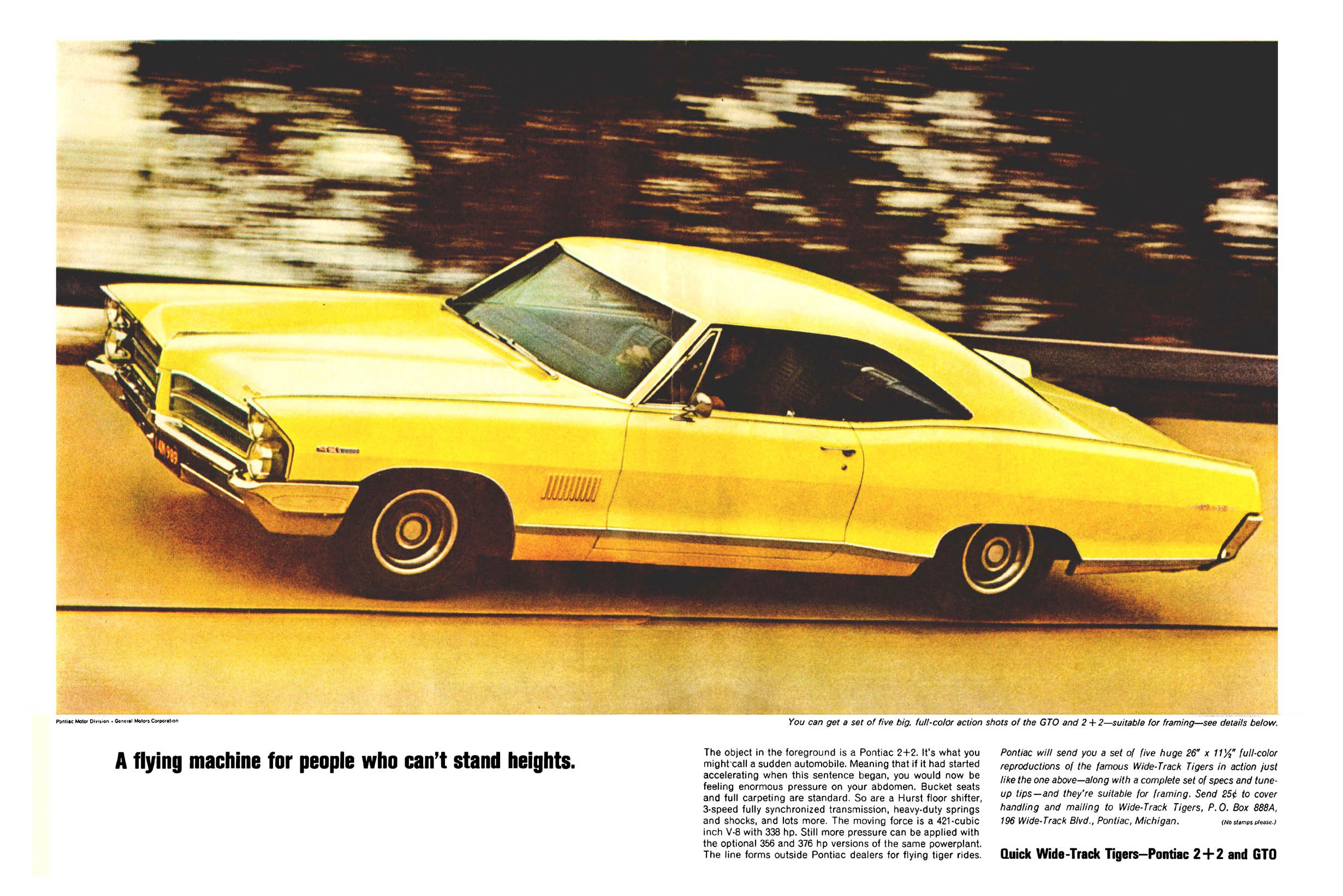
Anderson, who restored his Fontaine Blue 2+2 for driving, showing, and drag racing, has gone as fast as 13.79 seconds at 104 mph at New Jersey’s recently defunct Englishtown drag strip. Meanwhile, since 2010, the car has won seven POCI Gold Awards and the AACA Senior Grand National Award.
“I think I’ve got the only AACA Grand National car that is regularly drag raced,” Anderson says. “For most of those years, I was driving the car cross-country, since I didn’t own a trailer. From 2009–13, I racked up over 20,000 miles, traveling as far as St. Charles, Illinois, at typical highway speeds of 75–80 mph.”
That quick quarter-mile comes with an asterisk. Anderson runs his 2+2 in FAST (Factory Appearing Stock Tire) competition. The original WH-code 421 Tri-Power (356 hp) was rebuilt to “mostly stock” condition, although upgrades—including a roller cam, forged pistons and rods, and “some head work”—seem to stretch that definition.

“It’s nothing radical,” Anderson says. “Compression is actually lower than stock, now 10:1, so I can use pump gas. The car weighs 4360 pounds with me in it.”
Anderson’s 2+2 retains its original Muncie four-speed stick and 3.42:1 Safe-T-Track rear. The car came with unassisted brakes and steering, but Anderson upgraded the latter to power assist. Not surprisingly, the narrow bias-ply tires required by FAST rules stunt the 2+2’s full potential.
“I have to launch the car below 1500 rpm on a single carburetor, which makes for horrendous 60-foot times,” Anderson says.
Perhaps appropriately, his 2+2 stirs up some controversy of its own. “People often ask why I’m racing a champion show car. I tell them, ‘Do you really think somebody ordered a Tri-Power 421 four-speed Pontiac and didn’t race it?’”
Indeed, it seems a fitting way to attract some much-deserved attention to this overlooked classic Poncho.









